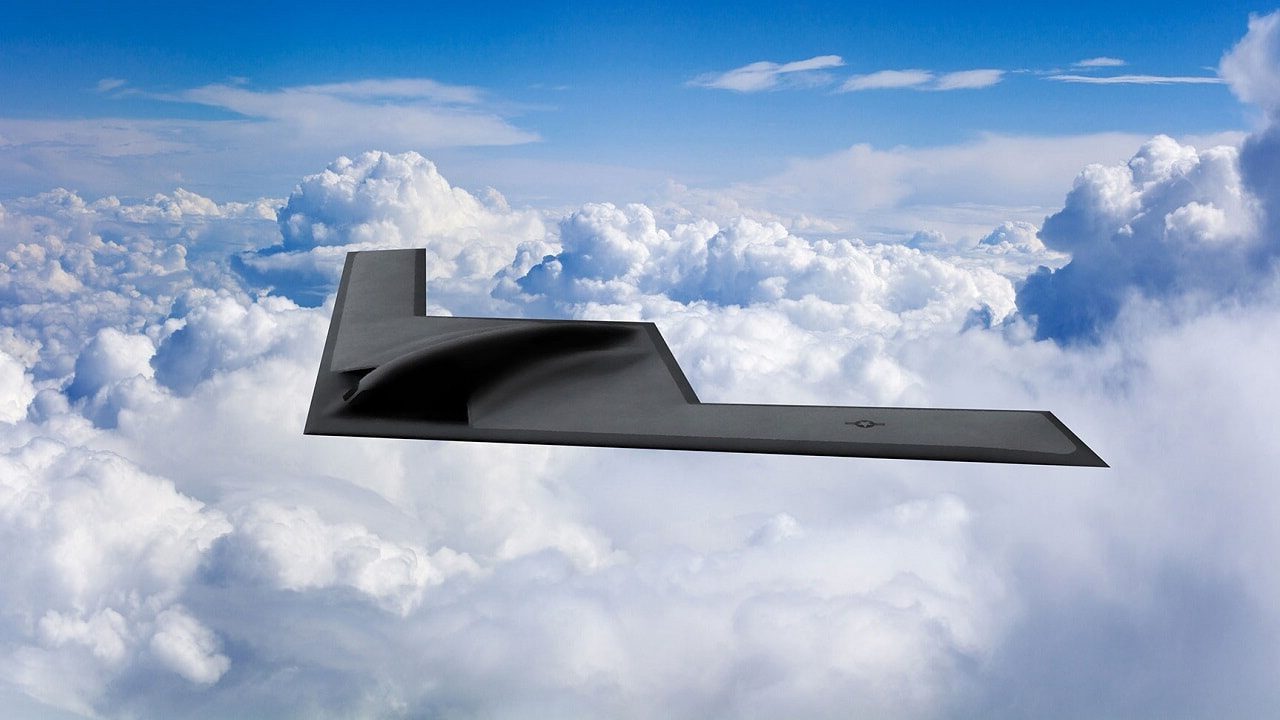With the B-21 bomber set to be publicly unveiled in just a few weeks, it is important to highlight major defense acquisition efforts that run smoothly and deliver a needed capability on budget. Too often, weapons systems make headlines over cost breaches, schedule slips, or mismanagement. But the US Air Force’s new bomber program is positive and encouraging, according to House Armed Services Committee Chairman Rep. Adam Smith (D-WA).
Speaking at AEI last year, the chairman said the B-21 program had incorporated well the lessons from the purchase of the F-35 Joint Strike Fighter. The new bomber has defied the odds and stayed on time, on budget, and has been made to “work in a very intelligent way.”
There are many reasons for the program’s success that date back several chiefs and congresses. Keeping cost estimates secret helped avoid giving China and Russia a head start in building cheap, fast counters to US technology. That’s because weight and cost are so closely correlated with aircraft development, and they could have allowed adversaries to piece together a useful sketch of the bomber’s range, payload, and most importantly for stealthy aircraft, its size.
Additionally, the bomber’s secrecy and unwavering performance parameters helped it avoid the “requirements creep” and gold-plating that has brought many a Pentagon program down into a spiral of failure.
A decade later, the Air Force’s new bomber means America is the only country in the world that can hold targets at risk inside mainland China—a capability essential to deterrence and avoiding conflict.
This new capability is especially needed at a time when it is increasingly harder to outrun, avoid, or defeat missiles so a bomber’s ability to carry more and larger missiles and sensors becomes more attractive.
The proliferation of long-range precision-guided missiles and advanced air defense systems challenges the traditional American method of power projection predicated upon regionally based non-stealthy aircraft. Many traditional aircraft will be unable to contribute to a significant degree in the opening days of conflict in deadly airspace surrounding peer competitors.
With its long range, large payload, and powerful sensor suite, the B-21 will prove essential to destroying an increasing number of mobile and hardened or deeply buried targets, alongside breakthroughs in hypersonic technologies.
Further, Russian and Chinese advances in jamming and anti-satellite capabilities threaten to cut communications between human controllers back in the United States and robots in enemy airspace. The B-21, with its large electronics suite and two or more airmen, will command and control independent aircraft from the hostile frontlines or serve as a data relay back to human controllers elsewhere.
The B-21 will also possess the range and payload to carry short-range drones into denied airspace, a necessary condition for employing these systems in realistic environments in the first place. In sum, the Air Force’s new B-21 Raider bomber simply can’t come soon enough.
Want more 19FortyFive military, defense, and national security, as well as politics and economics analysis from the best experts on Earth? Follow us on Google News, Flipboard, YouTube, Facebook, Twitter, and Linkedin. Also, sign up for our newsletter here. You can also find our code of publishing ethics and standards here. Want to contact us? Email: [email protected]

